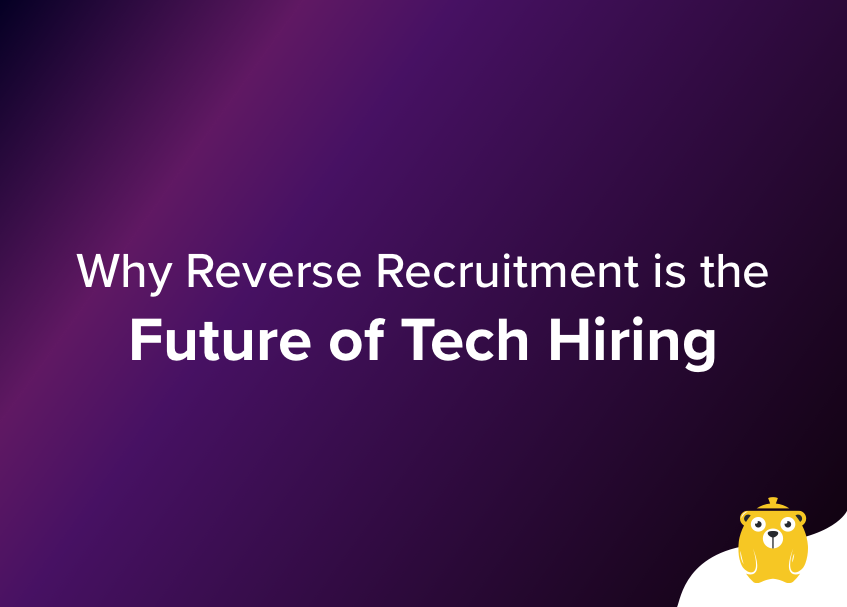Reconsidering Recruitment: Leveraging Reverse Recruiting for Competitive Advantage
Reconsidering Recruitment: Leveraging Reverse Recruiting for Competitive Advantage
Blog Article
Unlock the Power of Reverse Recruiting Strategies for Effective Ability Purchase
By attracting top ability to seek out possibilities within your organization, reverse recruiting supplies a fresh technique to attracting and retaining vital personnel. As firms strive to remain in advance in the ability video game, opening the potential of reverse recruiting strategies can be the trick to protecting a solid and vibrant workforce.
Comprehending Reverse Recruiting
Understanding reverse recruiting is essential in navigating the progressing landscape of ability acquisition techniques. Unlike conventional employment techniques where employers choose prospects, reverse recruiting involves the aggressive technique of candidates looking for possible employers. This paradigm change puts candidates in the chauffeur's seat, allowing them to select firms that straighten with their worths, occupation objectives, and work preferences.
Essentially, reverse recruiting empowers prospects to take control of their work search procedure by investigating business, connecting to employers or hiring supervisors directly, and showcasing their abilities and experiences. For employers, this approach provides an unique chance to attract leading talent who are truly thinking about the firm and its objective, cultivating a much more engaged and devoted labor force.
Benefits of Reverse Recruiting
Employing reverse recruiting techniques can yield substantial advantages for both candidates and employers in the skill procurement process. By being approached by companies that have currently determined them as prospective fits for their company, candidates can feel a lot more valued and looked for after.
In addition, reverse recruiting can assist business separate themselves in a competitive ability market by showcasing a positive and forward-thinking technique to employment. Inevitably, the advantages of reverse recruiting extend to both candidates and employers by simplifying the hiring procedure and fostering even more meaningful connections in between the two events.

Executing Reverse Hiring Tactics
To successfully incorporate reverse recruiting methods into a talent procurement method, companies must prioritize positive involvement with potential candidates. This involves identifying top skill within the industry and developing relationships with them prior to an actual work opening arises. One essential strategy is to take advantage of social networks platforms to get in touch with easy candidates who might not be actively Read Full Report seeking new chances. By showcasing the business culture, values, and profession development possibilities, organizations can pique the interest of prospective candidates and build an ability pipeline for future demands.
Additionally, implementing tailored communication methods can additionally improve the efficiency of reverse recruiting. By constantly supporting relationships with leading skill, organizations can remain ahead in the affordable ability purchase landscape and secure the best prospects for their team - reverse recruiting.
Leveraging Innovation backwards Hiring
In the digital age of ability procurement, taking advantage of technical improvements is paramount for effective implementation of reverse recruiting techniques. Leveraging modern technology in reverse recruiting uses many advantages to simplify the process and bring in top ability properly. Candidate radar (ATS) play a critical duty in managing prospect useful reference information, tracking interactions, and automating communication, permitting recruiters to concentrate on structure connections with prospective hires.
Making use of data analytics tools can help recruiters determine the performance of their reverse recruiting strategies, identify locations for enhancement, and make data-driven decisions to enhance the talent procurement process - reverse recruiting. By welcoming innovation in reverse recruiting, companies can stay ahead in the competitive talent market and secure top talent successfully.
Measuring Success backwards Hiring
Having developed the foundational role of modern technology in maximizing reverse recruiting methods, the next essential step hinges on effectively determining the success of these cutting-edge approaches. In the world of reverse recruiting, typical metrics like time-to-fill and cost-per-hire may not fully capture the influence of these approaches. Instead, measuring success in reverse recruiting calls for a much more nuanced strategy that concentrates on candidate engagement, employer branding enhancement, and long-lasting ability retention.
One secret statistics to think about is prospect experience. By collecting responses from prospects that have actually undergone the reverse recruiting process, companies can gain beneficial understandings right into areas for improvement and determine toughness to utilize. In addition, tracking metrics associated with company brand name understanding, such as social media sites belief and Glassdoor evaluations, can supply a much more holistic view of how reverse recruiting is shaping the company's track record in the ability market.
Ultimately, success backwards recruiting should be gauged not just by the performance of filling up functions yet additionally site link by the quality of hires, their alignment with organizational society, and their long-lasting performance within the company. By adopting a detailed method to measuring success, companies can really open the possibility of reverse recruiting techniques for effective ability procurement.
Conclusion

Report this page